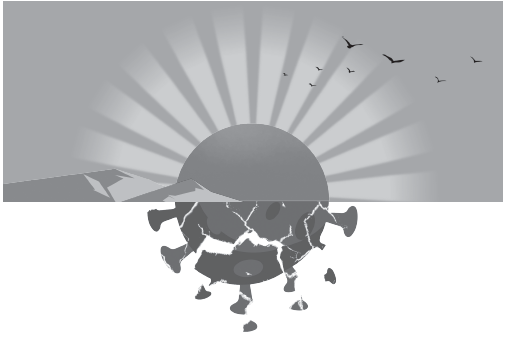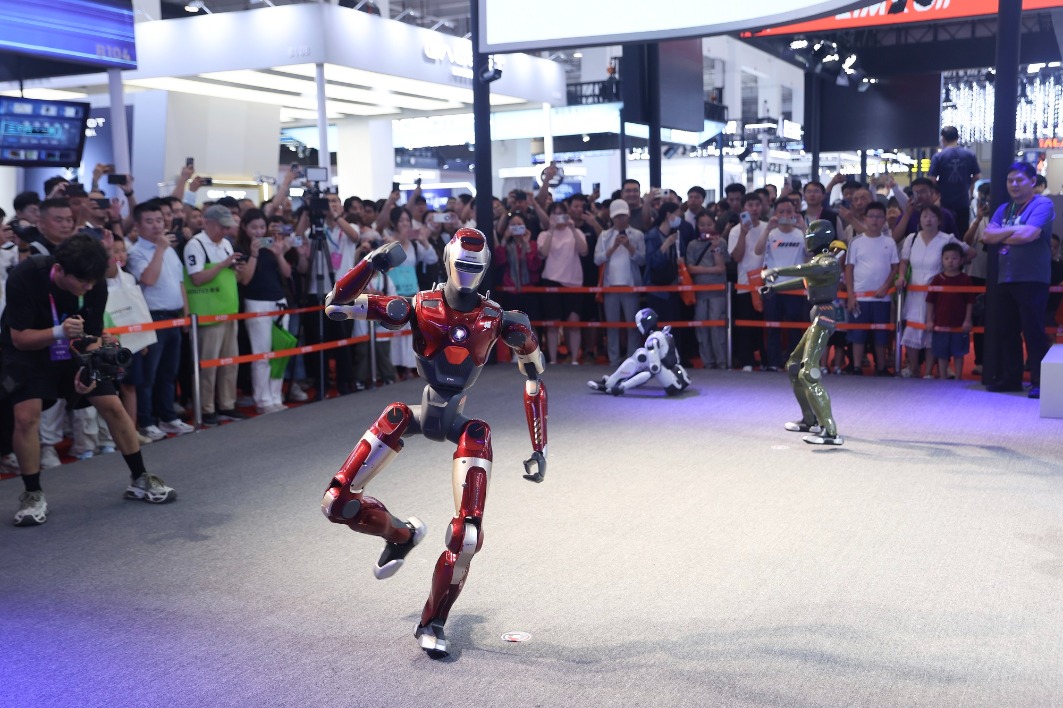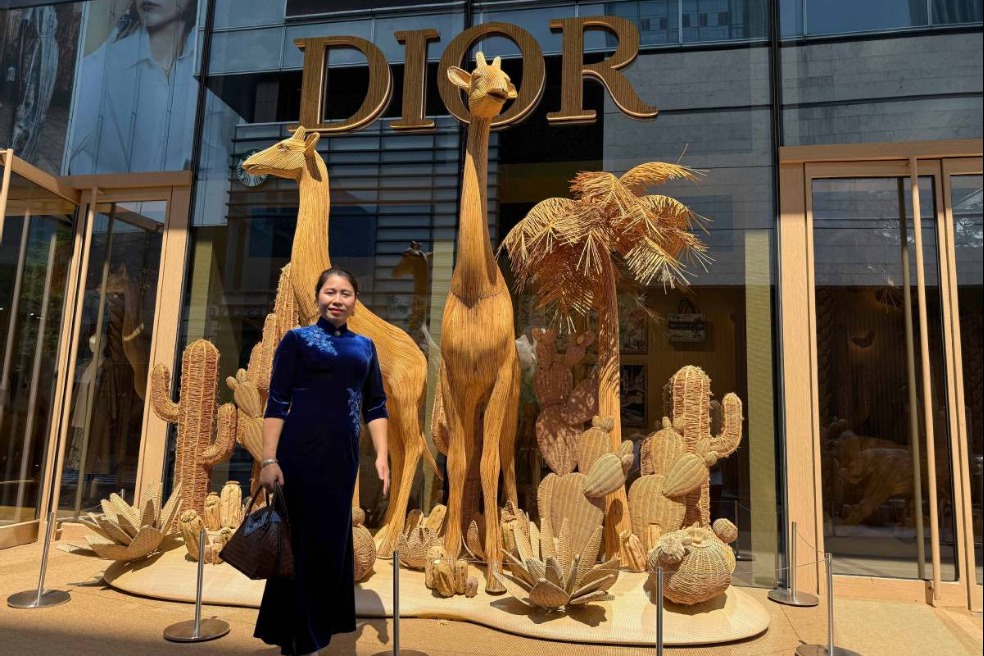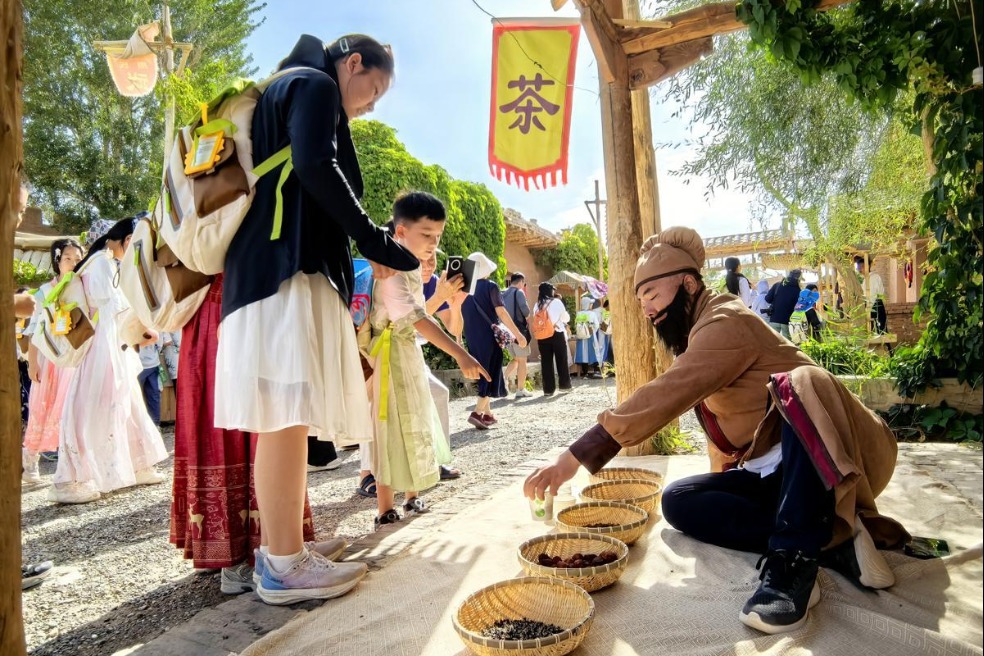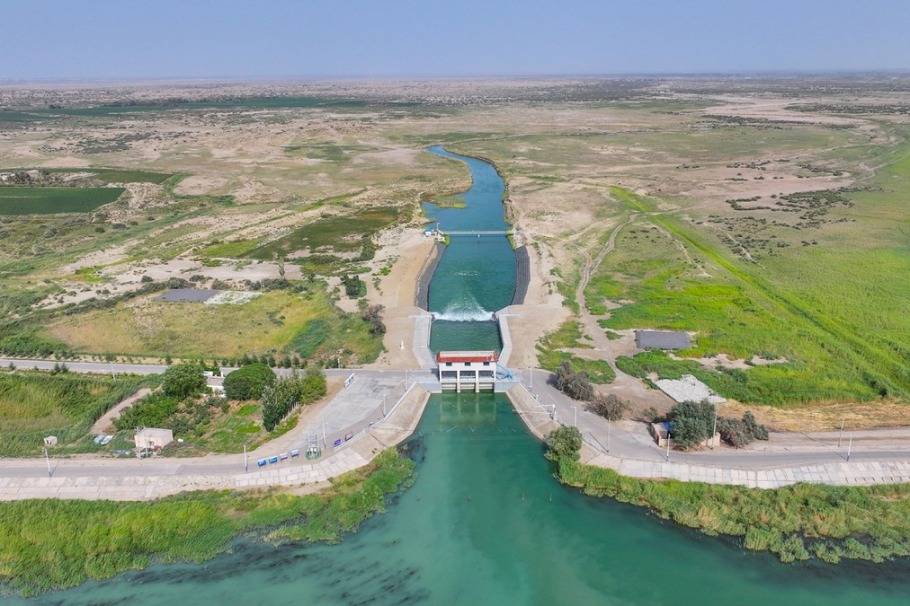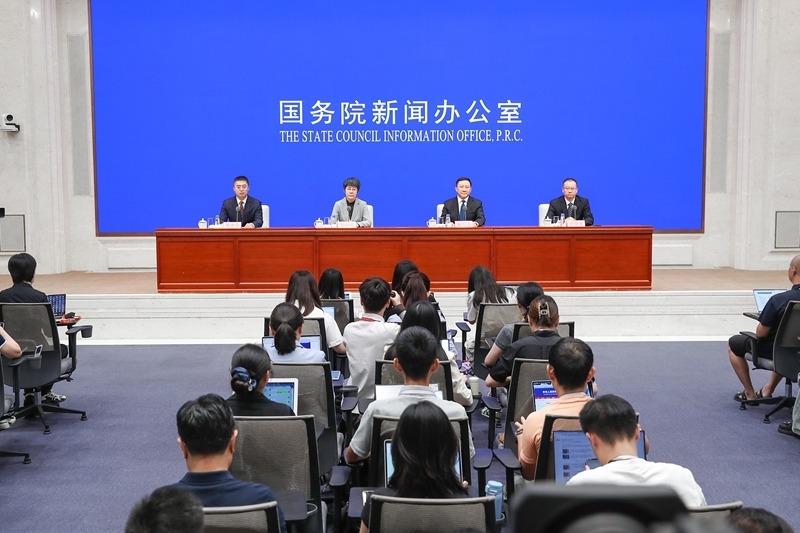COVID patients tell their stories after infection





Road to recovery taken as hospital workers praised
Editor's note: Four people infected with COVID-19 over the past three years tell how they contracted it, the treatment given, and the recovery they made. Their stories shed light on people's thoughts about the disease, government prevention measures, and life in general during the pandemic.
Li Qiang, 32, a small-business owner, in Shapingba district, Chongqing
I became infected on Aug 16 on my way to work around 7:30 am. I wasn't wearing a face mask because it was very hot. The local disease control and prevention center later found that I had a brief face-to-face encounter with another virus carrier, who was also not wearing a mask, when we used a pedestrian crossing.
Two days later, I began to develop symptoms, including a sore throat, cough, lack of appetite, fatigue and a fever of about 38 C. My wife and my father-in-law, who was living with us, were also infected. Seven months pregnant at the time, my wife, 31, experienced fatigue, shortness of breath, loss of taste, and a fever of about 38 C. My father-in-law, 53, had no symptoms.
We were extremely upset and anxious when my wife became infected, but later our worries were slightly eased. Chongqing Public Health Medical Center took good care of us because of my wife's pregnancy — sharing details of a similar case with us and telling us it was highly unlikely that the fetus would be infected.
As we had the same variant of the virus and could not infect each other, we remained in a large comfortable hospital ward together on the ground floor. The local health commission organized a special medical team to treat my wife, as ordinary COVID-19 medication may affect the health of the fetus.
Chongqing Traditional Chinese Medicine Hospital made a mixture that was wiped on my wife's body three times a day. After the treatment, she felt very relaxed and had a good rest.
The director of the isolation hospital, doctors and nurses were very kind to us, bringing us fruit and snacks from home. Five days later, we recovered and were released.
However, after we got home, my wife tested positive again, but this time she had no symptoms. After a week's isolation in a medical observation facility, she tested negative and was allowed to come home.
Later, she tested positive for a third time, but again without symptoms, so we returned to the isolation facility. The doctor said my wife probably had very high viral loads, and that people who have recovered from COVID-19 can continue to spread non-infectious viral fragments for several months after initial infection.
Just 18 days before my wife was due to give birth, she tested negative and was released from the facility.
As a local outbreak that began on Nov 1 originated in our neighborhood, the community was locked down and rated a high-risk area. The community workers were extremely considerate and helped us get to the hospital quickly. On Nov 8, my wife gave birth to a healthy baby boy weighing 3.3 kilograms.
Because of my wife's special circumstances, I had a great deal of communication with the local health commission, center for disease control, the hospital, isolation sites and the community. Overall, our prevention and control measures were rigorous, and although there were some problems with the whole process, the outcome was satisfactory.
I understand that the measures being taken are mainly aimed at protecting senior citizens and children. Although people are inconvenienced for the time being, they fully understand and support the action that has been introduced.
Friends and relatives aware of our situation still communicate with us as usual. I specifically asked my colleagues if they would be worried if I returned to work, but they all said that they believed in the government, and as we had been released from hospital, there was no problem.
The community has kept our details confidential, so local residents don't know about our infections.
My wife and I have no health insurance, and all the COVID-19 treatment we received was free.
Dongdong (an alias), 35, a photographer in Chongqing.
On Nov 9, my community — Qianjin Zhilu Community in Chongqing's Jiulongpo district — received a hospital notification stating that a tube containing samples from up to 10 people in a recent local COVID-19 nucleic acid test batch was found to be positive. My sample was one of those in the tube.
In the next two days, medics completed two more rounds of nucleic acid testing for us at our homes. I began to develop a slight cough, sore throat and a runny nose, but did not have a fever. At midnight on Nov 11, I received a phone call telling me I was a positive COVID-19 case.
On Nov 16, I was sent to a makeshift hospital in the district, which could accommodate thousands of patients. I heard on the news that the hospital was completed in just a few days, and I had no fears about being sent to it.
I think I became infected at a nearby food market, which was reportedly one of the main transmission chains for the recent COVID-19 outbreak in Chongqing. There were some 20 confirmed cases in my neighborhood.
I was diagnosed with a mild infection of the Omicron sub-variant BA.5.2. As my symptoms persisted, doctors at the hospital gave me traditional Chinese medicine.
Meals at the hospital were good, with plenty of choices such as eggs, bread, milk, porridge, soup, fruit and juice. Lunch and dinner normally consisted of two meat dishes and one vegetable dish.
Patients such as myself were able to live normal lives. For example, I saw student patients in the hospital using laptops or tablets for online lessons. Other patients chatted, read news reports or just rested. To make a good recovery, we were told to sleep early at night, and I rested well at the hospital.
Staff members distributed new N95 face masks regularly, and all the services provided at the facility were free.
Late on Nov 29, after I had been in the hospital for 13 days, I was discharged, as I met the requirements that all symptoms must have disappeared for more than three days and two recent nucleic acid tests had to be negative.
I agree with the dynamic zero-COVID policy.
I've had high blood pressure for years, and three years ago, I was diagnosed with Type-2 diabetes. My parents died in the past few years, and I now live alone.
If I had to rely solely on myself after becoming infected, with no doctors to take care of me, I don't think I could have recovered like this. I know there are doubts about the COVID policy, but patients are treated well and make a full recovery.
I don't think it is the right time to totally lift prevention and control measures, as long as they are implemented properly.
The outbreak has not yet disappeared. I miss bustling city life, and want things to get back to normal so that I can earn a living by photographing Chongqing and its people, like I did before.
Wang Bo (an alias), 20, a student at Hebei Normal University, which was badly hit by a COVID-19 outbreak last month.
Due to a cluster of infections at our school, I was transferred to a hotel in Shijiazhuang for quarantine on Nov 12, along with many other students.
On the first day at the hotel, I started to worry that I had become infected, as I began to develop a high fever. I felt terrible.
Service at the hotel was quite good, but I was not allowed to leave the room I shared with my two classmates. The food was also good, but I gradually lost my appetite and sense of taste.
All I could do was rest, drink lots of water and take some traditional Chinese medicine and Western medication provided at the hotel.
I was confirmed positive on Nov 19, when I was transferred to a makeshift hospital in Zhengding county, Shijiazhuang.
After being transferred to the makeshift facility, I started to feel better, as the staff members there organized activities such as square dancing for the patients to exercise together.
In the giant hall that was transformed into the hospital, I saw many infected people — young and old. Most of them were extremely positive about their health and took part in activities enthusiastically.
During my time at the hospital, I gradually relaxed, before receiving a negative nucleic acid test result on Nov 23. Two days later, I was sent back to our university, but completed seven days' quarantine to make sure I had totally got rid of the virus. I plan to go home early this month.
For me, the whole experience was like a sudden dream accompanied by fear and sickness.
But it also gave me an opportunity to see how others who were infected fought the disease and how medical workers and civil servants helped them.
We are all making efforts to conquer the virus. I hope that we succeed as soon as possible so that life can return to normal.
The original strain of the virus had strong virulence, which led to a higher incidence of severe cases and deaths.
Over the past three years, the coronavirus has developed a number of variants, but the dominant Omicron subvariant now has much weaker virulence, which results in weaker symptoms, especially in terms of lung infections, than the strain in 2019.
These findings result from research by Yoshihiro Kawaoka from the University of Tokyo, a renowned virologist and member of the National Academy of Sciences in the United States. The research results were published in the journal Nature in May.
In China, the government always puts people's lives and well-being first, sparing no effort in treating all patients, and making the nation the only major country with the lowest incidence and death toll from COVID-19 worldwide.
Below is the account of one patient infected with the original strain.
Lily Zhang, in her 30s, a finance industry worker, became infected with the original strain of COVID-19 in Wuhan, Hubei province, in late 2019, when the pandemic had just emerged.
After returning from a family gathering in December 2019, my parents became infected, and then I did.
I had a fever, coughing, headache and diarrhea. I stayed at home for about 10 days until I began to have difficulty breathing. At the time, nearly all hospitals were short of beds and were unable to admit large numbers of patients.
With the help of a friend, I contacted a hospital in the suburbs of Wuhan. I nearly had a car accident on the way to the hospital, as I drove there while I still had a fever.
I was hospitalized for two weeks and had CT scans of my lungs a dozen times. The results showed I had a mild case of COVID-19. The doctors gave me antibiotics, hormones and drugs to enhance immunity. I was also given oxygen to help my breathing.
I was discharged from hospital after I stopped coughing and the fever subsided. I was then sent to a fangcang, or makeshift hospital, for two weeks' quarantine before being transferred to a hotel for another two weeks of health monitoring.
Before becoming infected, I was not particularly healthy. After my tonsils were removed, I experienced colds from time to time.
I try to avoid getting sick, and along with my family members I take traditional Chinese medicine in the hope that my health will improve.
Epidemic prevention and control measures over the past three years have brought considerable disruption to people's work and lives. I appreciated the concern of many people who asked for lockdowns and other supervisory measures to be lifted.
Although the virus seems to have weakened, those with underlying diseases may still develop severe health problems if they become infected.
Medical resources in China are limited, and many patients are hospitalized with other diseases. If COVID-19 patients become critically ill and flock to hospitals, there will be even fewer medical resources to treat them. For those families with elderly members and children, the younger generation will be under great pressure to take care of them.
Contact the writers at tanyingzi@chinadaily.com.cn
